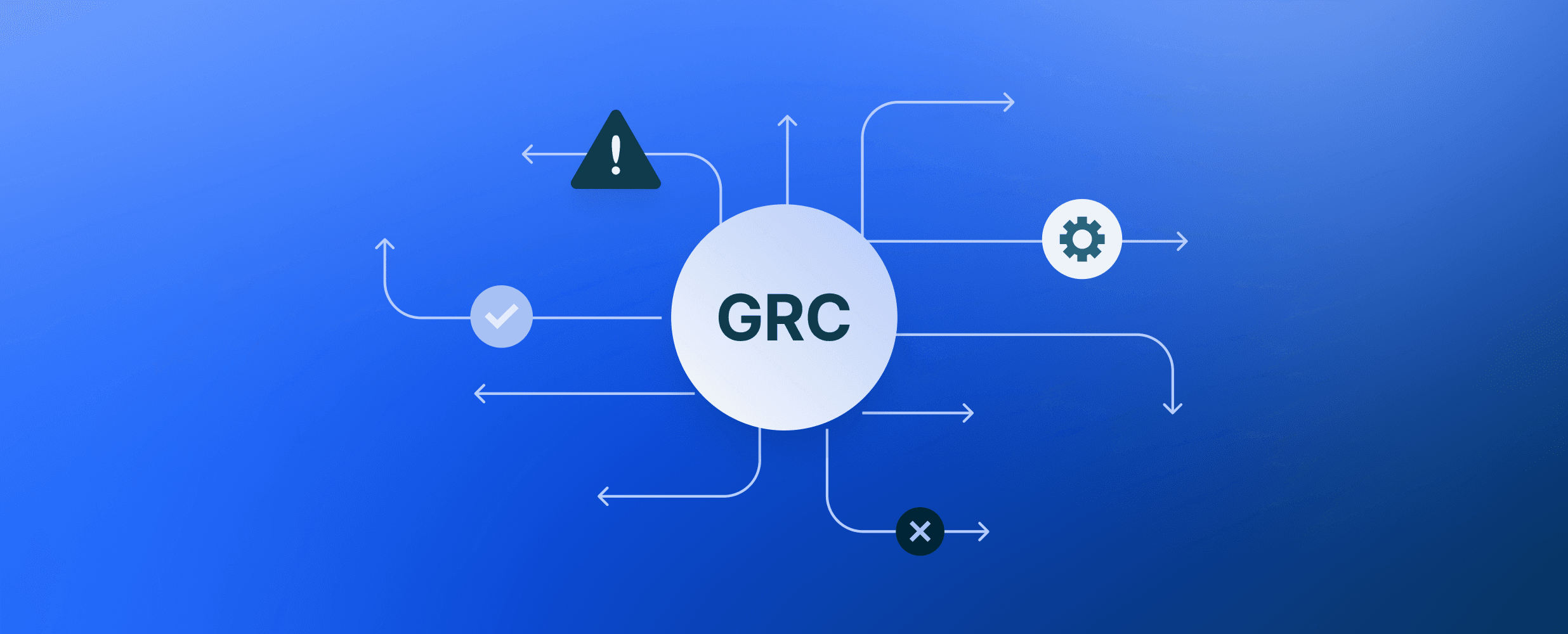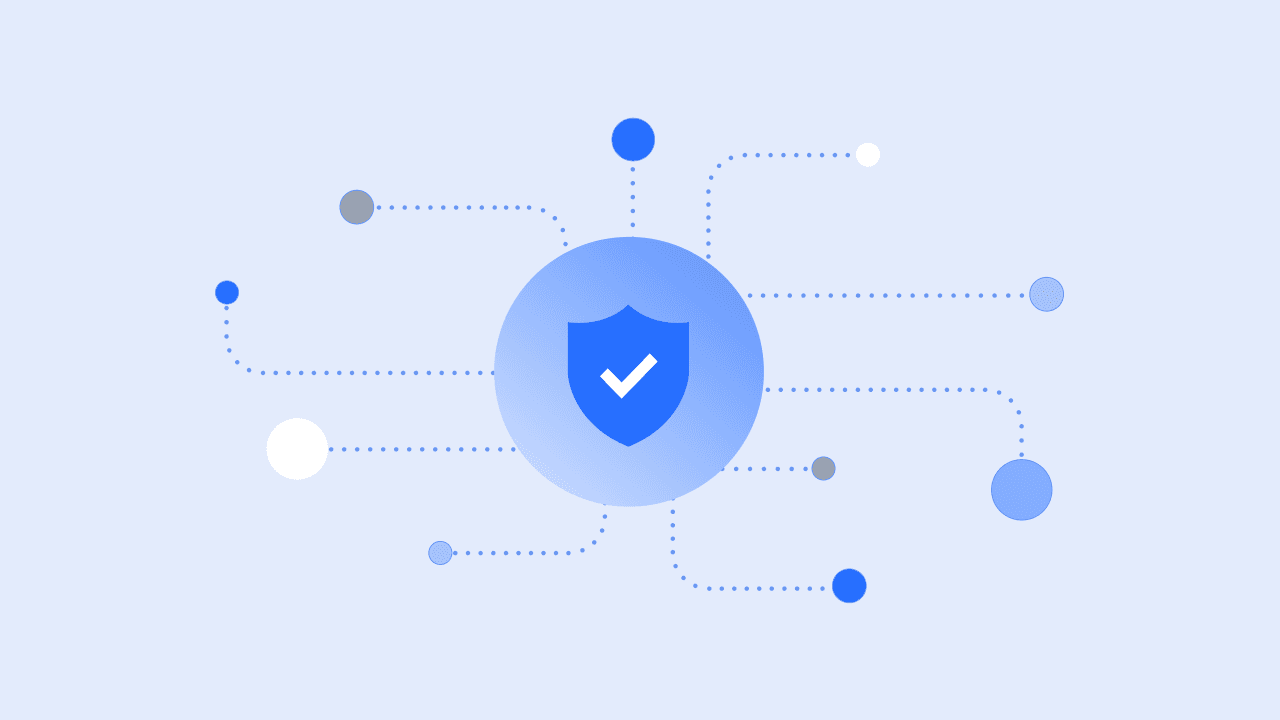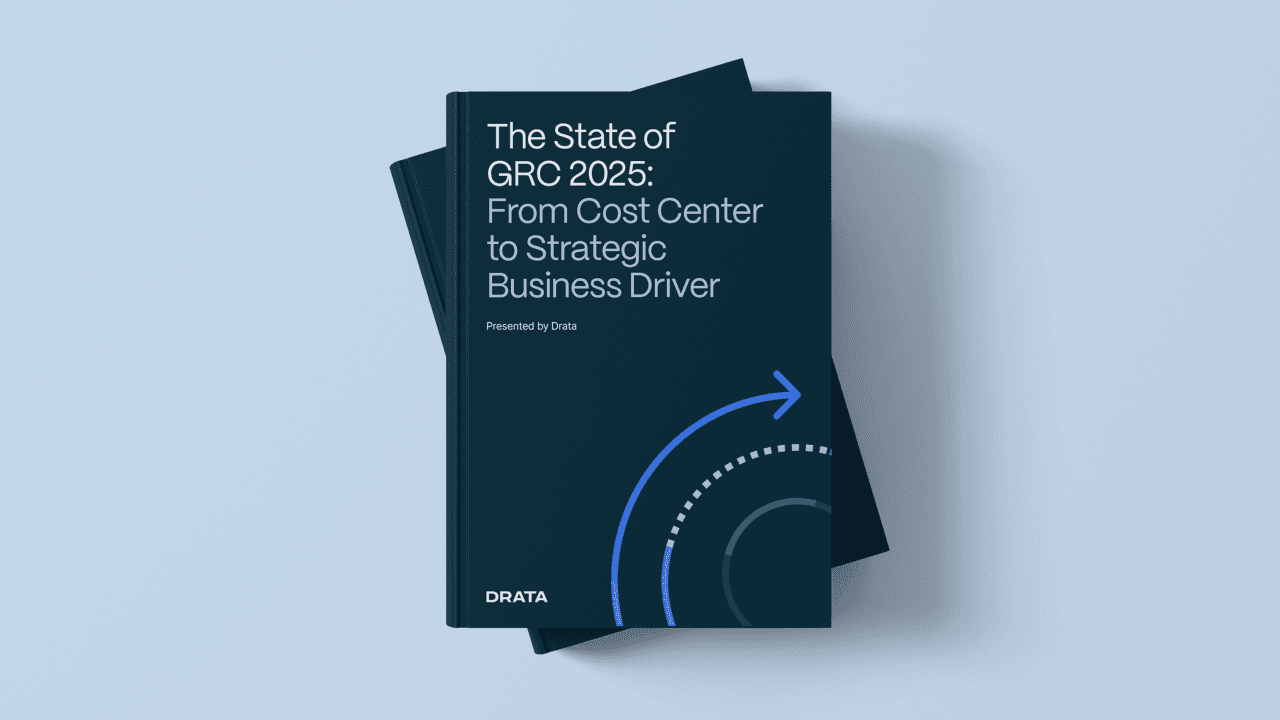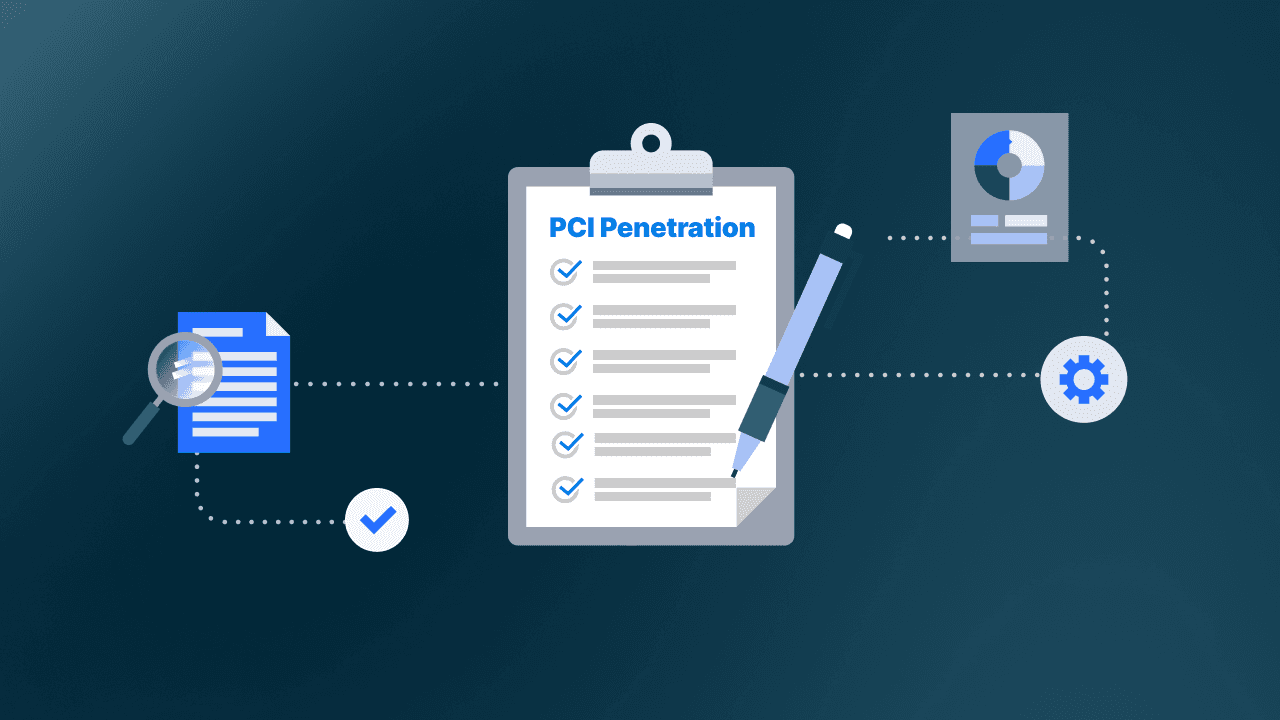Why GRC Automation is Key When Expanding Your Compliance Framework Goals
As you expand your business operations, your GRC program must evolve. With GRC automation, you can scale your compliance program in parallel with your business objectives while reducing time spent on administrative tasks.
As data breach costs and regulatory compliance requirements continue to increase, your governance, risk, and compliance (GRC) function has become a revenue-enabler. Today’s customers need assurance over your security practices to protect them from liability, and your GRC team can answer those customer questions.
In response to these pressures, the term “GRC automation” has become part of daily senior leadership conversation. Compliance, a function long treated as a cost center, now provides critical sales enablement as well as cost reduction. From building customers' trust to improving operational efficiency, GRC automation offers various benefits.
As you expand your business operations, your GRC program must evolve. With GRC automation, you can scale your compliance program in parallel with your business objectives while reducing time spent on administrative tasks.
What is GRC Automation?
GRC automation replaces time-consuming, error-prone manual processes with specialized software to reduce the time and money spent on compliance. Some examples of the repetitive tasks that organizations can automate include:
Risk assessments
Data collection
Policy management
Compliance reporting
Customer questionnaire responses
According to our State of GRC 2025 report, 83% of organizations have a mixture of manual and automated IT compliance practices, and 93% of organizations still want to automate critical GRC tasks that remain manual. Many organizations recognize that tracking IT compliance with spreadsheets is inefficient and expensive, yet lack a holistic approach to automation.
Modern IT environments increasingly integrate cloud-native technologies that are more dynamic than traditional on-premises implementations. Today, you need to have risk management processes that cover:
Creating and maintaining an asset inventory for corporate devices, including laptops, mobile devices, and Internet of Things (IoT) devices.
Managing how user owned devices connect to networks.
Limiting user access according to the principle of least privilege.
Maintaining secure configurations for operating systems and downloaded software.
Monitoring cloud technologies for misconfigurations, including Software-as-a-Service (SaaS) and cloud-based document management and sharing solutions, like SharePoint and Google Drive.
Enforcing network security policies across on-premises and cloud infrastructures.
Monitoring vendors to mitigate supply chain data breach risks.
When you manage compliance with static spreadsheets, the documentation becomes outdated almost immediately. When you automate only portions of your compliance monitoring, you can improve your posture yet risk creating gaps that can lead to fines and penalties from violations.
Benefits of Automating GRC
Automating GRC is the corporate version of using a robot vacuum to clean up your living room floor. Your robotic vacuum might clean all the visible floor space while you focus on the dust living under your couch. Your GRC automation takes care of the surface tasks so that your IT and compliance teams can focus on strategic tasks.
Customer Trust
Your customers—whether in a business-to-business (B2B) or business-to-consumer (B2C)—setting want to know that you can protect their data. They want to know that you are implementing basic cyber hygiene so that they can safely share their information with you. According to our research, 98% of companies want to mature their GRC programs so they can build trust internally and externally, viewing the function as a business driver. When you automate your GRC processes, you can focus on implementing security controls rather than writing documentation that talks about implementing security controls.
Faster Sales Cycle
In the B2B setting, your customers need you to provide the same assurance over security as you want from your vendors. During the sales process, your potential customers will send you security questionnaires asking about key controls and requiring documentation. For example, 42% of GRC teams anticipate that AI will enhance risk management and streamline security reviews and questionnaires. Automating this process and leveraging artificial intelligence (AI) streamline this process, especially when your sales teams need to answer the same question for multiple customers.
Improved Efficiency and Cost Reduction
As your business grows, so do your compliance requirements. When your business adds more employees and more enabling technologies, you increase your attack surface which makes the continuous controls monitoring more burdensome, especially when using manual processes. For example, 37% of GRC teams believe that AI will streamline their audit processes. These efficiencies ultimately reduce the time and money spent on audits. Automating your GRC functions means that you can create a central location for and shared understanding of the reports, artifacts, and questions that auditors will ask, reducing the time spent on gathering documentation.
Evolving Regulatory Landscape
Legislative bodies, regulatory agencies, and industry organizations respond to every new technology with a new set of controls and compliance requirements. The European Parliament published the first regulation governing AI and noting that testing AI systems must comply with EU data protection law rules and principles, while the National Institute of Standards and Technology (NIST) published the Artificial Intelligence Risk Management Framework (AI RMF). While 100% of companies expect to increase their use of AI technologies, only 10% have a GRC program to support the impact that this use will have on their compliance posture. With automation, you can add new compliance requirements to your program more easily, enabling you to innovate while reducing compliance risk.
Why Automating GRC is a Challenge
In some cases, companies rely primarily on manual processes and spreadsheets. Many have adopted limited automation but struggle to mature their programs further. For example, 41% of companies categorize their current program as being in the adolescent, developmental stage. While many organizations recognize the value of GRC automation, they face significant struggles when they work to mature their implementations.
Costs Over Benefits
Whether your organization relies on manual processes or limited automation, you may struggle to balance the costs of new technologies with your current budgetary limitations. For companies managing compliance with spreadsheets, the cost of purchasing a GRC automation tool may feel like a luxury, especially when you have to make difficult investment decisions around security versus compliance solutions. On the other hand, if you have limited GRC automation, you may struggle to rationalize purchasing a new tool or moving to a more robust solution.
Setting Up tools is Time-Consuming
Every new technology takes time and skill to implement. Moving from spreadsheets to a GRC automation platform can feel like starting from the very beginning, which not only feels overwhelming but can take staff away from more critical tasks. Similarly, maturing your compliance program by incorporating either a new solution to augment current capabilities or engaging in a complete rip and replace can come with a time-consuming deployment process.
Adding to Already Large Cybersecurity Stack
Every new technology creates a new cybersecurity risk, even the ones that enable data protection. Further, adding another technology to an already crowded cybersecurity stack creates new challenges and costs, including:
Managing another solution.
Integrating the solution with other tools.
Correlating data across diverse, disconnected dashboards and data silos.
Best Practices for Implementing GRC Automation
Whether you’re just starting your GRC automation journey or seeking to mature your implementation, you can get the most value from your solution by considering the following best practices.
Integrate Automation with Mission Critical Systems
For a holistic approach to IT compliance, you need insights into how your security controls function across all mission critical systems. For example, your GRC automation should integrate with your current tools, including:
Human resources information systems (HRIS)
Single sign-on (SSO)
Cloud providers, like Google, AWS, and Azure
Task management tool
Ticketing systems
DevOps toolchain
Additionally, your solution should provide capabilities for customization, like validating specific controls or connecting with other tools.
Start with Identifying and Mapping Risks to Controls
While every compliance mandate defines a control using different language, most data security and privacy requirements intend to cover similar risks and suggest similar protections. When you start by defining your list of threat-based risks, you can identify controls more efficiently. From there, you can use a GRC automation solution. Look for one that comes with a built-in risk list that maps to multiple standards, including:
NIST SP 800-30
ISO 27005
OCR SCA
PCI DSS
SOC 2
HIPAA
GDPR
Create Customized Risks
Nearly every compliance framework builds on a foundation of organizational risk, and every company has a different risk profile. As you mature your program, you may want to consider risks that align to your specific business needs. By customizing your risk categories, you improve your overall compliance by enabling you to:
Develop customized risk treatment plans.
Align assessment scores to your business needs.
Create risk-related tasks integrated into your ticketing systems.
Connect Vendor Risk Management with Your Overall Compliance Program
Many companies manage third-party risk in a separate platform, creating potential security and compliance gaps. By integrating your vendor risk management (VRM) in the same solution as the rest of your security and privacy compliance program, you gain comprehensive insights to minimize human error risks.
By connecting your VRM with the rest of your compliance monitoring and risk management, you can automate:
Analyzing potential vendor impact.
Identifying high risk vendors.
Tracking vendor impact, likelihood, and treatment.
Documenting and reporting vendor information to auditors.
Automate Security Questionnaire Responses to Increase Deal Velocity
As your program matures, you can begin using it to improve revenue. The unsung hero of GRC automation is the ability to accelerate your sales cycle and increase deal velocity for receiving and responding to security questionnaires. Leveraging AI to respond to security questionnaires enables you to streamline your responses by providing the requested answers while ensuring you maintain control over the sources used to respond.
How Drata Simplifies and Automates GRC
Drata’s unified GRC platform enables you to mature your compliance posture and helps you automate security tasks so you can accelerate your sales cycle. With Drata’s platform, you can:
Automate compliance monitoring across SOC 2, ISO 27001, HIPAA, GDPR, PCI DSS, and more.
Get real-time risk insights with continuous monitoring and automated alerts.
Simplify audits with evidence collection, Trust Center reports, and auditor-ready compliance frameworks.
Ensure security best practices with automated user access reviews and penetration testing integration.




